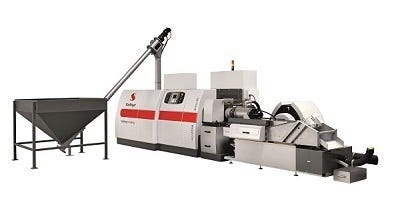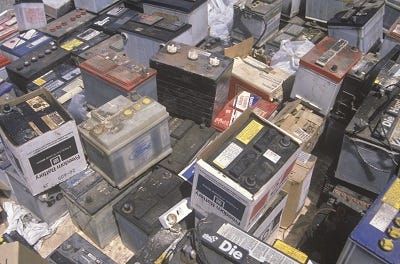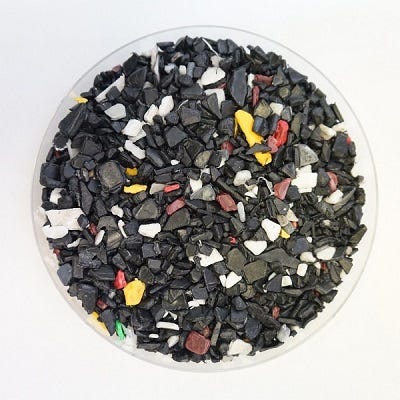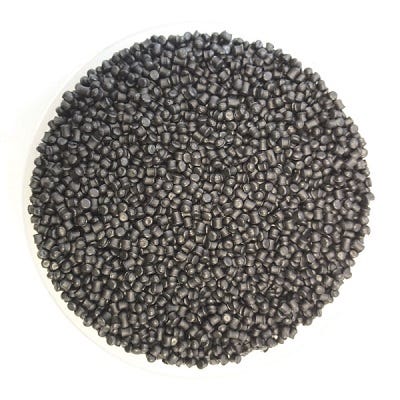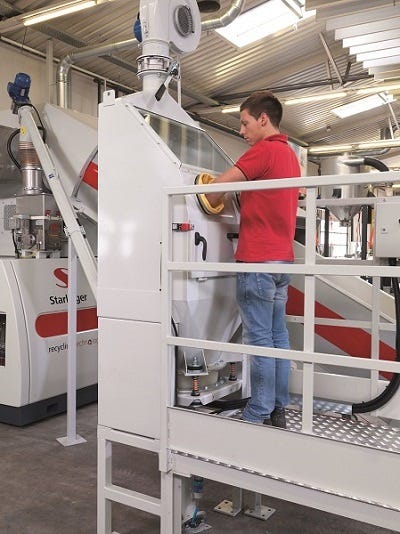Plastics recycling in the automotive industry
The use of plastics in automobiles has continued to grow over the past 20 years. The primary reason for this is that they help to reduce vehicle mass. A lighter car consumes less fuel, which also translates into less exhaust emissions. In addition, plastic parts are not prone to corrosion, offer flexibility and resilience for added safety, have very good thermal insulation, reduce noise and allow optimum space utilization. Today, an average vehicle consists of 12-15 % plastic parts1).
February 9, 2015
The use of plastics in automobiles has continued to grow over the past 20 years. The primary reason for this is that they help to reduce vehicle mass. A lighter car consumes less fuel, which also translates into less exhaust emissions. In addition, plastic parts are not prone to corrosion, offer flexibility and resilience for added safety, have very good thermal insulation, reduce noise and allow optimum space utilization. Today, an average vehicle consists of 12-15 % plastic parts1). Assuming that an average car weighs 1300 kg, this amounts to 150-200 kg of plastic per vehicle.
End-of-life vehicle plastics recovery
The figures above clearly show the huge potential for plastics recovery that lies in the automotive sector. The Europe Union's End-of-Life Vehicle (ELV) Directive 2000/53/EC acts as an important driver for recycling in the automotive industry, establishing adequate systems for the collection of ELVs and tightened environmental treatment standards. It sets targets for the recovery of vehicle components and recycling, and encourages manufacturers to design their vehicles with the reuse and recycling of parts in mind. According to the directive, currently a minimum of 85% by an average weight of an end-of-life vehicle should be reused or recovered, including 5% energy recovery. As of January 2015, the rate of reuse and recovery should attain a minimum of 95% with a minimum of 85 % recycling by an average weight per vehicle per year2).
The plastic parts used in the automotive industry are mostly injection molded, such as dashboards, bumpers, fluid tanks, handles, buttons, casings, containers, clamps, and sockets. The recycling challenge here is that very often reinforced plastics (containing fillers such as glass fiber, carbon fiber and glass beads) or plastic blends (e.g., PP compounded with EPDM or TPE), as well as two- or multi-component injection molded parts are used.
Key issues: Removal of odor and contaminants, up-cycling, and flexibility
Plastic parts from the automotive industry have special requirements for recycling that need to be considered in order to obtain a product that is fit for further usage. The removal of odor and contaminants by high-vacuum extraction and melt filtration, as well as introduction of additives for up-cycling are the main issues to be taken into account. Process flexibility for quick and efficient material changeover and a wear-resistant machine design - for recycling reinforced plastic parts that contain glass fiber, for example - allow recyclers to process diverse input materials.
Volatile and solid contaminants need to be thoroughly extracted in order to produce high-quality regranulate suitable for reuse. Special vacuum degassing extruder modules allow reprocessing of colored and contaminated parts. According to the type of contamination, different filter systems and sizes are used which also help to reduce melt loss.
1) PlasticsEurope AISBL, Automotive - The world moves with plastics. 2013. P. 3
2) Directive 2000/53/EC of the European Parliament and of the Council of 18 September 2000 on end-of life vehicles, Article 7. Official Journal of the European Communities. October 2000. L 269/38
Technology for automotive plastic scrap recycling - case studies
Starlinger recycling technology, a business unit of Austrian mechanical engineering company Starlinger & Co. GmbH, supplies recycling lines equipped for automotive plastics recycling and has installed various lines for this special application.
recoSTAR direct, recoSTAR basic and recoSTAR universal machine models utilize the same process flow and differ mainly in the set-up of the pre-treatment section, which depends on the input material that is processed. Each machine can be equipped with degassing and high-vacuum units, melt filters and one of four pelletizing systems.
Case Study 1: Heavy regrind scrap
Heavy regrind scrap (> 300 g/l), for example injection moulded parts such as car bumpers, can be processed without pre-cutting or compressing in the recoSTAR direct recycling line. From a feeding hopper, the material is transported directly into the extruder by a screw conveyor. The special advantage of the recoSTAR direct is that no heating or other treatment of the material is required before extrusion.
Case Study 1:
Input material: Regrind mixture comprised of PP, POM and ABS
Scrap: PP (partially with up to 20 % CaCO3), POM, ABS
Past solution: Toll recycling
Objective:
Compounding of additives: up-cycling by adding calcium carbonate and talc powders in dosage of up to 20 %
Equipment:
recoSTAR direct 85 with water ring pelletiser
Special Features:
Automatic material feeding from mixing silo depending on extruder load
Includes powder big-bag unloading station and additive dosing unit
Wear resistant design of barrel and screw
Regranulate used for: Production of non-visible interior panels for cars. 100% of regranulate is used in-house in ratio of up to 40%
|
Recycling lines are customized for the task in question. In this case, a Starlinger recoSTAR direct 85 was employed. ©Starlinger & Co. GmbH |
Case studies 2 and 3: Wet and pre-ground scrap
Pre-ground, lightweight, contaminated, wet or hygroscopic materials, such as from old car batteries, are pre-treated in the agglomerator of the Starlinger recoSTAR basic recycling line by means of knives on a rotating disc at the bottom. This frictional process heats and dries the mixed material, densifies it and brings it close to the melting point. The material is then fed continuously into the extruder by centrifugal force; the feeding rate is controlled automatically by the load of the agglomerator motor. The optional agglomerator air-flush function effectively removes humidity and potential strong odors in the pre-treatment phase.
Case study 2:
Input: HDPE fuel tanks
HDPE fuel tank scrap
Washed end-of-life material. Contamination: metals, wood, rubber, other
Objective:
Odor removal for later re-use.
Equipment:
recoSTAR basic 85 D-VAC
Special Features:
Agglomerator air-flush (for high moisture content, odor removal)
Double extruder degassing with high-vacuum
Continuous rotation filter for melt filtration with minimum melt loss
Regranulate used for: Reused in fuel tank production.
Case study 3:
Input: post-consumer PP car batteries
Regrind of post-consumer car batteries (polypropylene)
Contamination: sulphuric acid (in case of insufficient pre-washing)
Objective:
Thorough removal of contamination
Equipment:
Two recoSTAR basic 165 VAC
Special Features:
Supplied as turnkey project
Dosing unit to add masterbatch (up-cycling by adding two components)
Parts in contact with material, gases and water made from stainless steel; no wearing parts in the agglomerator
Regranulate used for: Reused in car battery production.
|
Old car batteries © American Spirit/Shutterstock.com |
|
Regrind from car batteries. ©Starlinger & Co. GmbH |
|
Regranulate from car batteries ©Starlinger & Co. GmbH |
Case study 4: Hard-to-grind and co-mingled materials
Equipped with a heavy-duty single-shaft cutter arranged parallel to the extruder, the recoSTAR universal can process hard-to-grind materials such as injection molded parts without pre-cutting, as well as mixed materials with different bulk densities. The single-shaft crusher cuts the material, which is then fed cold into the extruder. The speed-controlled dosing screw ensures stable and constant feeding, and the three-drive design allows exact dosing of the material as well as control of the output. If required, an optional rotor temperature control can be added for processing humid and/or hygroscopic materials.
Input: Co-mingled injection molded parts
PA 66 with up to 30% glass fiber content, mixtures of PC/ABS, POM, and PP
Injection molded parts, clean production waste
Objective:
Processing of polyoxymethylene (POM): special treatment, efficient material changeover
Improved wear resistance for glass fiber processing
Addition of CaCO3 powder (up-cycling)
Equipment:
recoSTAR universal 65 H-VAC
Special Features:
High-vacuum for improved degassing
Hydraulic back-flushing for filtration < 200 µm, less back-flushing loss and longer use of filter screens
Automatic strand pelletizing
Regranulate used: Part of the regranulate is reused in production; a small proportion is sold externally.
|
recoSTAR universal with CaCO3 dosing unit ©Starlinger & Co. GmbH |
About the author:
Claudia Hagn is the Product Coordinator Business Unit of recycling technology for Starlinger & Co. Gesellschaft m.b.H.
About the Author(s)
You May Also Like
